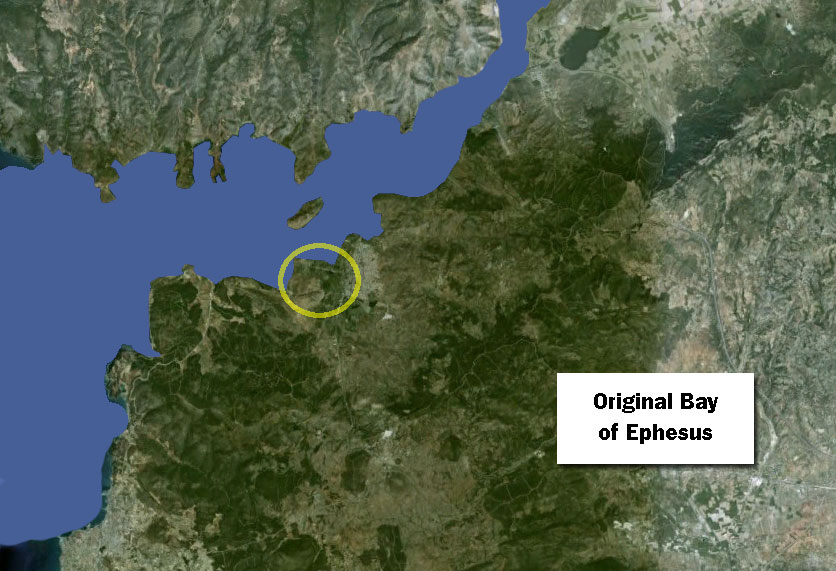
The original Bay of Ephesus before silt filled it in (ca. 600 B.C.E.)
In the seventh century B.C.E., when Greeks settled the western coast of Asia Minor, both Ephesus and the site of the Artemision lay on the shore of the Aegean (see circle on map), beside a large bay that went many more miles inland. As the years passed however, more and more of the Anatolian highlands washed into the Cayster, which carried its silt downstream, depositing it at its mouth, creating new land that filled in the bay.
Want to dive deeper?
John C. Kraft, Helmut Brückner, Ilhan Kayan, and Helmut Engelmann. “The Geographies of Ancient Ephesus and the Artemision in Anatolia,” Geoarchaeology: An International Journal, Vol. 22, No. 1 (1997): 121–149. Cited January 17, 2017.
A team of scientists made an extensive series of bore-holes around the Ephesus area and analyzed the resulting core samples. They determined dates when the tested area was under water and compiled maps showing the shoreline at given dates in ancient times. My maps are based on this research, primarily the maps on pp. 127, 130, 142, and 143, as well as Figure 1 from the following article.
Hugo Delile, Janne Blichert-Toft, Jean-Philippe Goiran, Friederike Stock, Florent Arnaud-Godet, Jean-Paul Bravard, Helmut Brückner, and Francis Albarède. “Demise of a harbor: A geochemical chronicle from Ephesus,” Journal of Archaeological Science, 53 (2015): 202-213. Figure 1.
